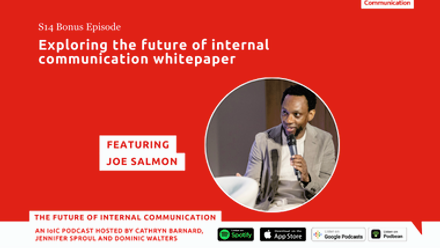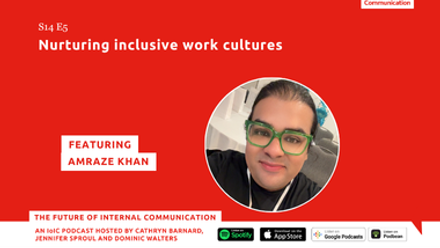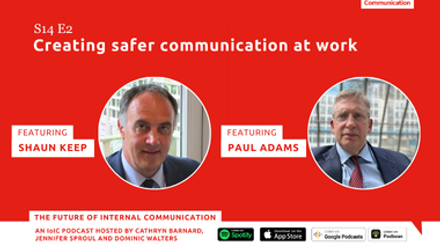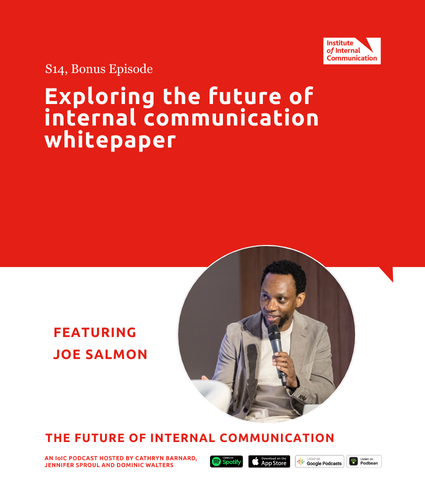To achieve this and ensure we maintain our status as trusted advisers, here are four steps I implemented and questions I asked to deliver my client's post Covid-19 communication approach that helped me cement the importance of internal communication.
THINK AHEAD
- Your future normal communication approach should not be solely based on the current situation. Think ahead, i.e. what if there is a second wave or lock down? Are redundancies being communicated now? Are reward packages being re-visited because of remote working? Is your share price low, meaning the company needs to cut cost across the board? Etc.
- Your new communication plan should be short, compelling and complement your original one. The only difference is that it will now include the future normal.
- Test if your strategy and plan remain aligned with your business priorities, and the new business model. I did so by working with my leadership team to determine their strategy post Covid-19.
- Think about how you will communicate through multiple virtual layers to ensure that your messages reach people on the front line, for example.
DISCOVER
- Collaborate with key stakeholders to develop a full understanding of how your company is planning to return to the workplace before you start to make major changes or decisions. I did so by organising short sessions with HR, facility management, security and global travel teams and the wellbeing department.
- Ask questions and seek counsel. You might be newly empowered as an internal communicator, but that doesn't mean you have all the answers or already know what needs to be done. Stakeholders enjoy when you make them feel involved and important, so harness this approach.
- Begin with the end in mind to verify you understand the expectations your line manager and stakeholders have for you and your team post Covid-19.
- Seek feedback to understand the individual motivations and drivers of your employees and stakeholders. I did so through surveys, townhalls, social enterprise channels and short listening sessions.
PLAN
- It's going to be very busy from now on so take the time to create a plan for yourself as a communicator. Think about the skills you need to develop further to cope with the future normal. Don't be afraid to ask for advice from your IC network – we are all in this together. The IoIC and CIPR have hundreds of resources and almost all agencies are now offering free training webinars.
- Take the time to tweak your approach in dealing with your leadership teams to continue gaining their buy-ins. For example, instead of emailing my leader, I found it to be more efficient if I sent him an instant message.
- Ask yourself if you have the right virtual network in place to be successful? I revisited my stakeholder map and analysis and tweaked it to match the current work conditions.
EXECUTE:
Now that you have everything you need, it's time to put your plan/approach into action, but make sure you are:
- acting as an ambassador for your team. This can be done by asking your team and key stakeholders how they view IC and what success would look like for them
- keeping true to achieving your vision while you fight fires and deliver on the day-to-day necessity
- Testing the ideas with a small number of your audience. I use design thinking, whereby I have two groups who act as my sounding board. The first is the creative group who help me with new and creative tactics and the second is my technical group, who help me simplify my complex messages. Again, people enjoy it when they are made to feel valuable and heard.
EVALUATE:
This is the fun part and it's when you are able to stomp your feet and clap your hands in joy because the data you will gather will help you know if you are in the right track or not and help you when speaking with your leadership teams. Here are some touch points I evaluated:
- The impacts internal communication is having on the wider company
- Employees' perception of the team
- The help employees need from internal communication to transition to the future normal.
The good news is that with advances in listening techniques, behavioural science, advanced analytics and two-way communication channels, we as internal communicators can now tackle employee experience in a more targeted and energising way and we can also tailor tactics that create widely shared feelings of wellbeing and alignment across the company.
So, don't be afraid to challenge the status quo because this is the time where people will actually listen to you – now that they witnessed the most unprecedented unknown.
IoIC Awards 2026
Find out everything you need to know with our entry guidance including top tips to help your submission stand out. Early Bird Entries must be submitted by 11.59pm on Friday 13 February and Standard Entries submitted by 11.59pm on Friday 17 April.Latest Podcast: Nurturing inclusive work cultures
In this bonus episode of season 14, Jen, Dom and Cat are interviewed by IoIC board member and fellow Joe Salmon. Together they discuss the factors driving change for internal communication and ways in which internal communicators can prepare for an altogether exciting future.








